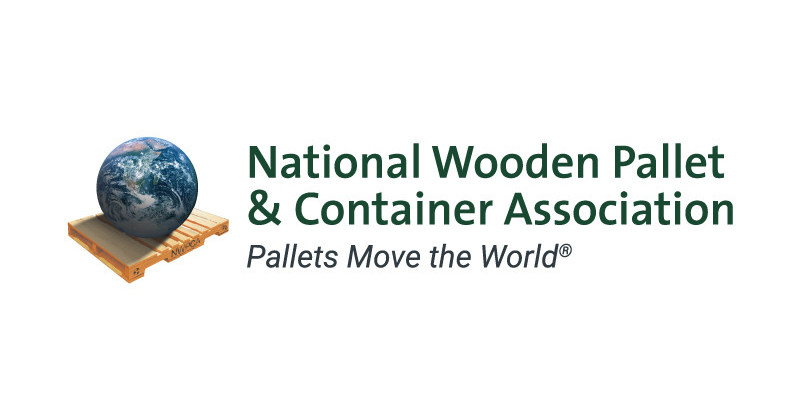Why Wood Choice Matters for Pallets
Pallets play a crucial role in shipping and storage, providing a stable platform for transporting goods safely and efficiently. If you’ve wondered what wood are pallets made of, you should know the type of wood used in pallet construction significantly impacts their performance, durability, and cost. Choosing the right wood ensures that pallets can withstand the demands of various industries, from food and pharmaceuticals to heavy machinery.
In the U.S., different types of wood, including both hardwoods and softwoods, are commonly used for pallet manufacturing, each offering unique strengths and characteristics suited to specific applications. Understanding these options is key to selecting the most suitable pallet material for your needs.
Why Troymill Is the Best Choice for Pallets
Troymill stands out as a top choice for pallet manufacturing because they utilize a premium hardwood mix in their pallets. This approach not only enhances the durability and strength of their products but also ensures that they meet the demands of various industries, offering a reliable and long-lasting solution for shipping and storage needs. By incorporating a blend of high-quality hardwoods, Troymill provides customers with pallets that balance strength and cost efficiency.
Common Woods Used for Pallets in the U.S.
In the United States, the most commonly used woods for pallet manufacturing are pine and oak. These woods are chosen for their availability, affordability, and specific characteristics that make them well-suited for different industries.
- Pine: This softwood is popular due to its lightweight nature and lower cost. Pine is widely available and easy to work with, making it a go-to choice for pallets used in the food and pharmaceutical industries. It can be kiln-dried, minimizing moisture-related issues and ensuring a cleaner product.
- Oak: A commonly used hardwood, oak is valued for its strength and durability. Its high density makes it ideal for handling heavier loads and fragile goods. While it’s more expensive than pine, its longevity often justifies the higher cost, especially for applications requiring a stronger and more resilient pallet.
These woods form the backbone of the U.S. pallet industry, providing versatile and reliable options depending on specific shipping and storage needs.
Hardwood vs. Softwood: Key Differences and Applications
When deciding between hardwood and softwood for pallets, it’s essential to understand the fundamental differences in their properties and how these affect their applications.
Hardwood (e.g., Oak):
- Density and Strength: Hardwoods are generally denser, making them stronger and more capable of handling heavy loads. This is why hardwood pallets are ideal for industries dealing with large machinery, steel equipment, or other heavy products.
- Durability: Hardwood pallets typically have a longer lifespan due to their resistance to wear and moisture. This makes them a suitable investment for businesses requiring pallets that can be reused many times.
- Cost Considerations: While hardwood pallets offer durability and strength, they are more expensive. They also tend to be heavier, which may impact shipping costs.
Softwood (e.g., Pine):
- Lightweight and Affordable: Softwood pallets are lighter and generally more affordable, making them a common choice for industries with lower weight requirements, such as food and pharmaceuticals.
- Sustainability: Softwoods grow faster than hardwoods, making them a more sustainable option. Kiln-drying also minimizes moisture issues, ensuring a cleaner and safer product for sensitive applications.
- Shorter Lifespan: Despite their benefits, softwood pallets may not hold up as long as hardwood options, particularly in demanding environments.
Mixed Hardwoods: Versatility and Benefits
Mixed hardwoods offer a versatile option for pallet manufacturing, combining the strengths of various hardwood species to create a durable and cost-effective solution. These pallets are made from a blend of hardwoods such as maple, beech, and other regionally available species. By using mixed hardwoods, manufacturers can offer pallets with improved resilience at a lower cost compared to single-species hardwood options like oak.
Benefits of Mixed Hardwoods:
- Cost-Effective: Since mixed hardwoods are often sourced from offcuts and surplus materials from other industries, they tend to be more economical. This approach reduces waste while providing a high-quality product at a lower price point.
- Durability and Strength: Mixed hardwoods combine the properties of several hardwood species, resulting in pallets that are strong enough for heavy loads and durable enough for repeated use.
- Availability: Unlike oak, which can be limited by regional supply, mixed hardwoods are more widely available, ensuring consistency in production and supply.
By opting for mixed hardwoods, companies can benefit from a balanced solution that offers both strength and cost efficiency, making them suitable for a wide range of applications.
How to Choose the Right Wood for Your Pallets
Choosing the appropriate wood for your pallets depends on several factors, including the weight and type of goods being transported, budget constraints, and the desired longevity of the pallets. Here are some key considerations:
- Weight Capacity Requirements: If your products are heavy or fragile, hardwood options like oak or mixed hardwoods are more suitable due to their strength and load-bearing capacity. For lighter products, softwoods like pine offer a sufficient and cost-effective alternative.
- Budget: Softwoods are generally more affordable than hardwoods, making them a practical choice for businesses prioritizing cost savings. However, if durability and strength are critical, investing in hardwood or mixed hardwood pallets can provide long-term value.
- Industry and Application: For industries dealing with sensitive items like food or pharmaceuticals, kiln-dried pine is a great option as it minimizes moisture issues and ensures a clean product. On the other hand, sectors requiring heavy-duty pallets, such as machinery or construction, may benefit from the durability and strength of hardwood pallets.
- Sustainability and Availability: If environmental impact and supply consistency are important factors, consider using pine or mixed hardwoods. Pine grows quickly, and mixed hardwoods can be sourced from surplus materials, offering sustainable and readily available options.
By assessing these elements, you can select the wood type that best aligns with your operational needs, ensuring both efficiency and cost-effectiveness in your pallet usage.




